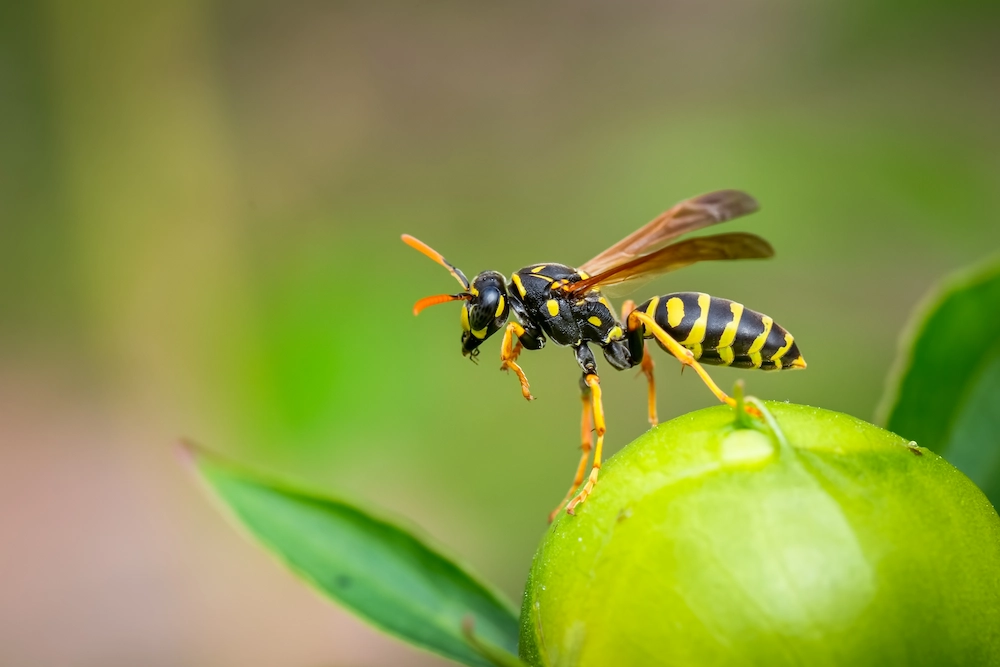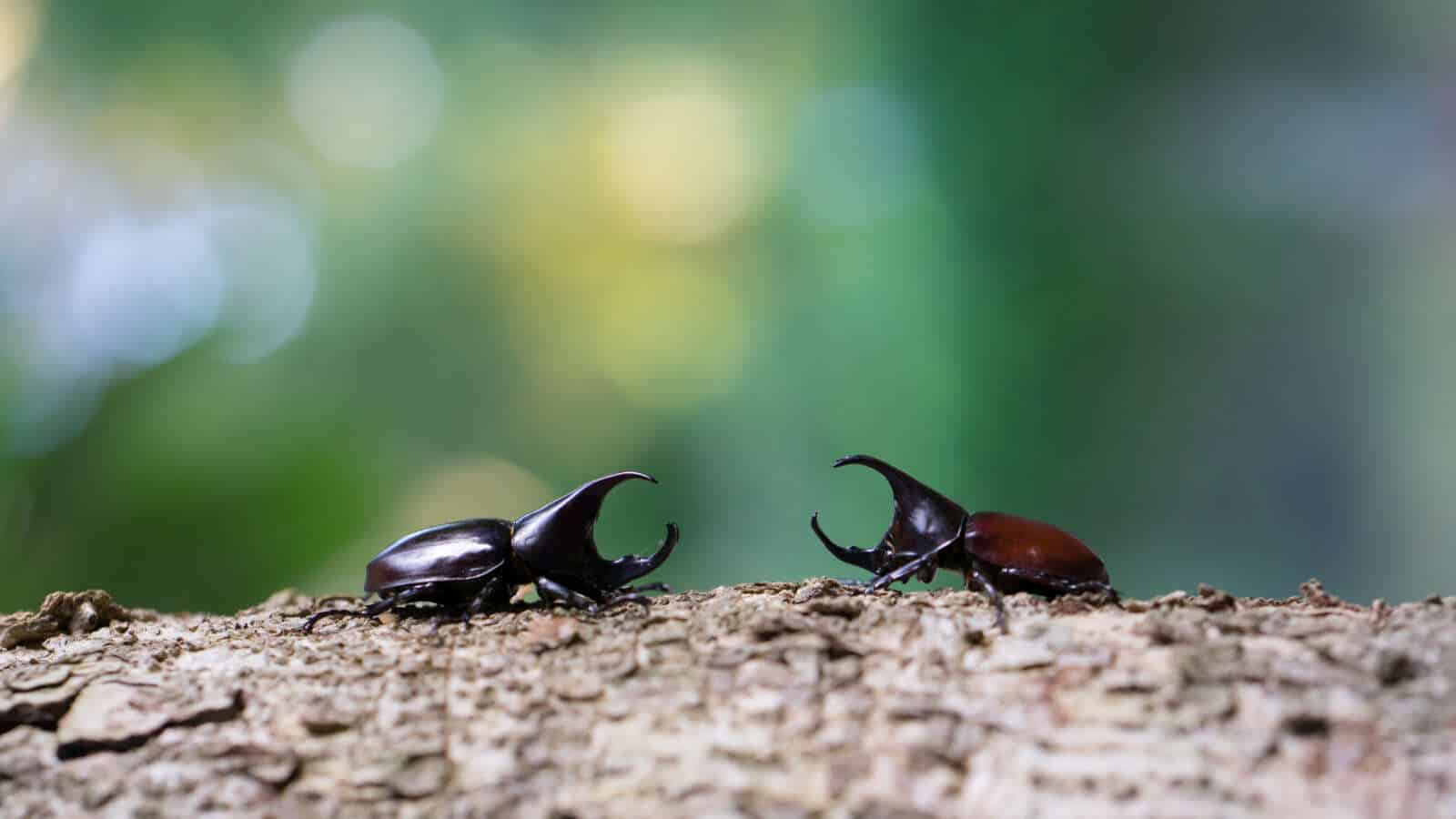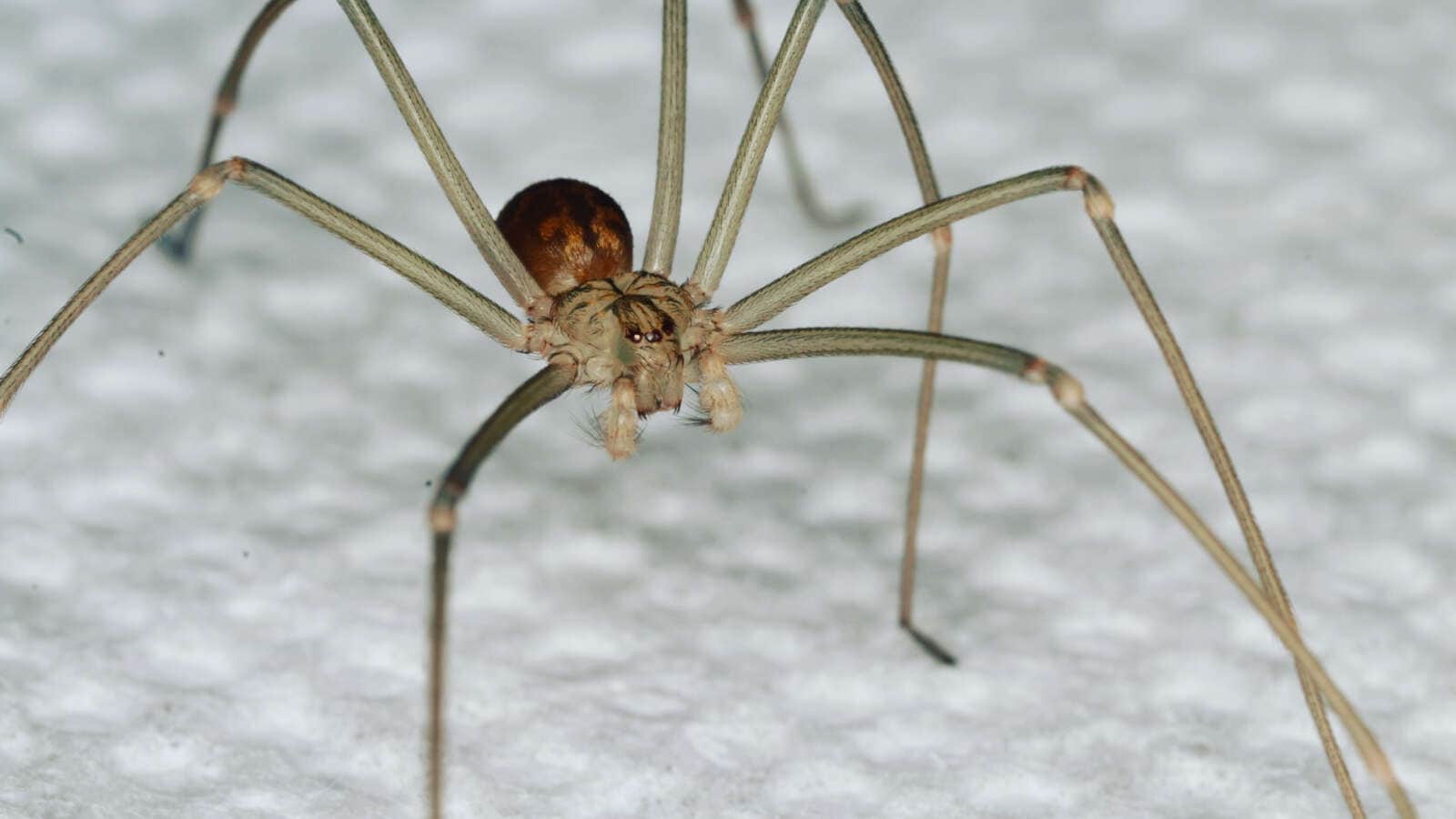Summary: It’s officially spring, and people are already enjoying the increased daylight hours and blooming flowers – but not the extra bugs. This blog describes the various ways that pests celebrate spring and prepare for their busiest season (summer). Pointe Pest Control provides efficient pest control services for springtime pests.
______________________________________________________________________________________________________________________________________
We’ve finally crossed over from winter into spring, and the nice weather is a welcome change from the frigid winter we just experienced. We won’t complain about the blooming flowers and increased daylight hours either! But humans aren’t the only ones who enjoy everything spring has to offer…
You may have noticed that bugs and spiders are starting to make their way out of their hidey-holes. The warmth of spring is their cue to get to work after a long winter’s rest. So how do pests celebrate this new season? Let’s find out by exploring the basic activities of springtime pests and how they impact our lives.
Find Food
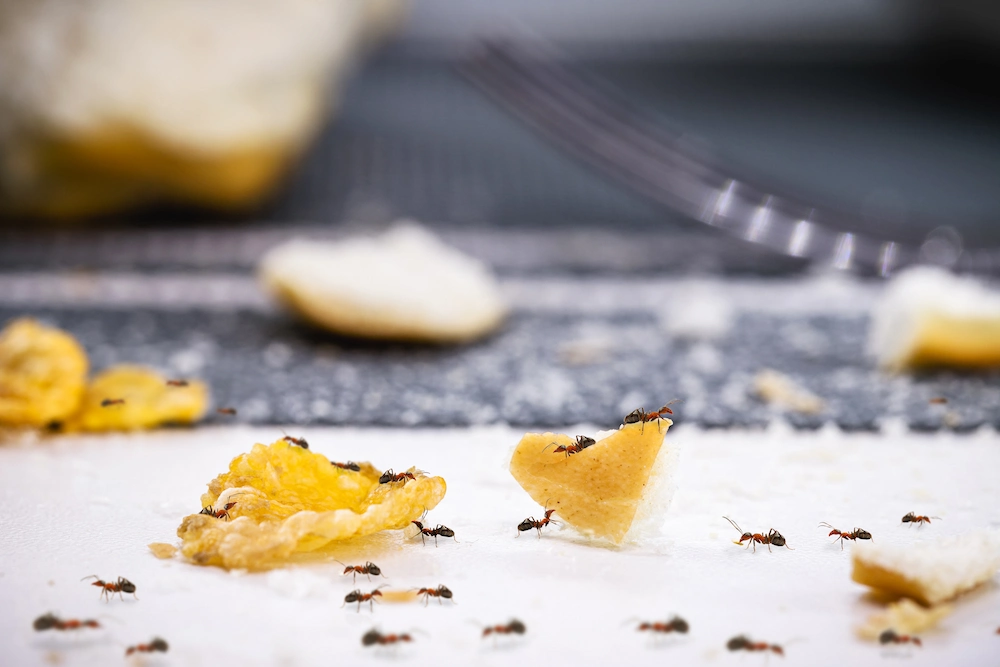
The Busy Pests: ants, beetles, flies, mice, rats, yellow jackets
Imagine you’re a pest that either went into a deep rest (diapause) over the winter, or just hatched from an egg that was protected from the bitter cold. You’d be pretty hungry, right? This is exactly why pests are so aggressive in their search for food during the spring. They want a big breakfast after a long winter without fresh food!
This desperation leads them to our homes, though they don’t have to go that far for food. Spring is full of backyard barbecues, picnics, parties, and dinners. Pests are drawn to our food like we brought it out for them! They’ll swarm the dishes, contaminating them once they make contact. But they don’t stop at human food; pests love dry dog or cat food for the protein.
Pollinate Flowers
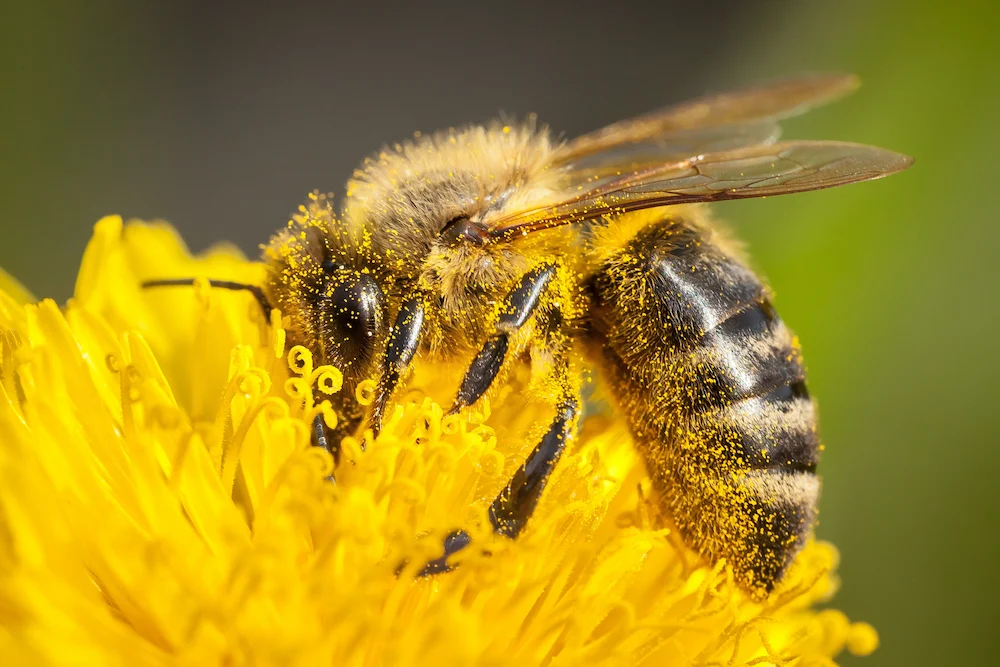
The Busy Pests: bees, butterflies, carpet beetles, flies, mosquitoes
Speaking of food, pollen and nectar are steady food sources for many pests. All of the flowers blooming in the spring sunshine are prime meals for the taking. The insects that gather pollen and nectar double as pollinators, which makes them (probably unintentionally) helpful to the ecosystem. As the pests collect their food, they fertilize each plant by spreading the pollen.
Pollinators are different from garden pests because of one key difference: pollinators don’t harm plants, but garden pests do. That’s because garden pests (aphids, caterpillars, spider mites, etc.) actually feed on the plants and drain the greenery of its nutrients. Pollinators just collect the nectar and pollen that flowers make in hopes of being pollinated anyway!
Grow Their Families
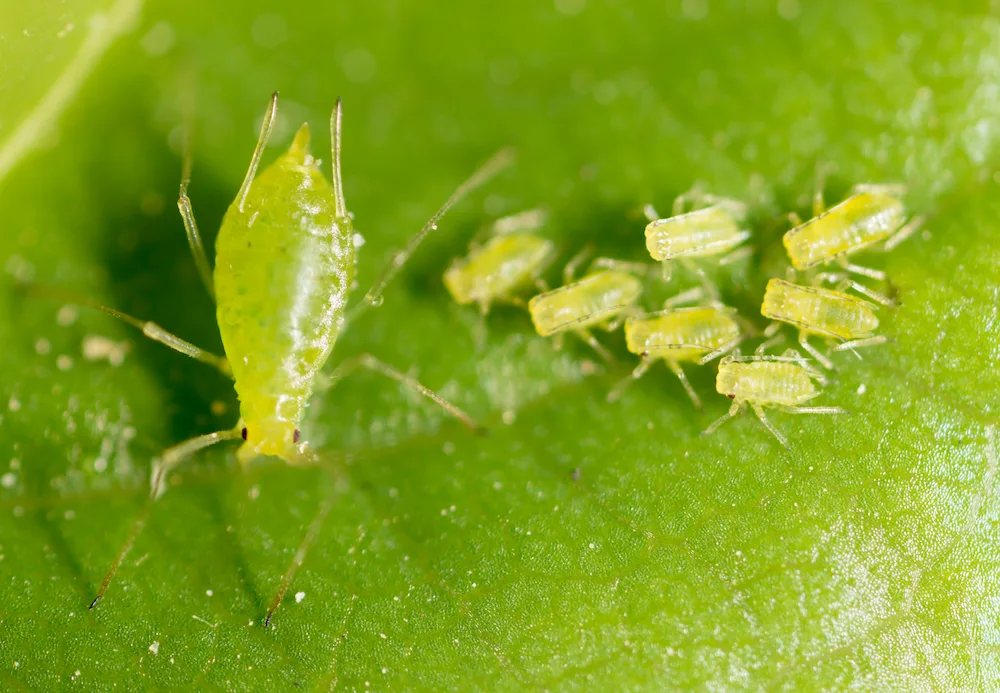
The Busy Pests: ants, bees,mice, rats, spiders, termites, wasps, yellow jackets
If you go on a nature walk in the spring, you might notice that plants aren’t the only ones producing new life. Geese and ducks walk around with their new offspring, and farm animals are bred to start reproducing livestock come spring. Pests are no different! Spring is the first time when it’s consistently warm, so pests need to make sure they don’t go extinct.
There are a couple ways pests grow their families. One is when the reproductive members (or swarmers) of a colony wake up and start producing eggs again. This is the case with ants, termites, and stinging insects. The other is when either female pests begin to produce fresh eggs or offspring, or the eggs that overwintered hatch. Either way, the next generation of pests is here!
Make Their Homes
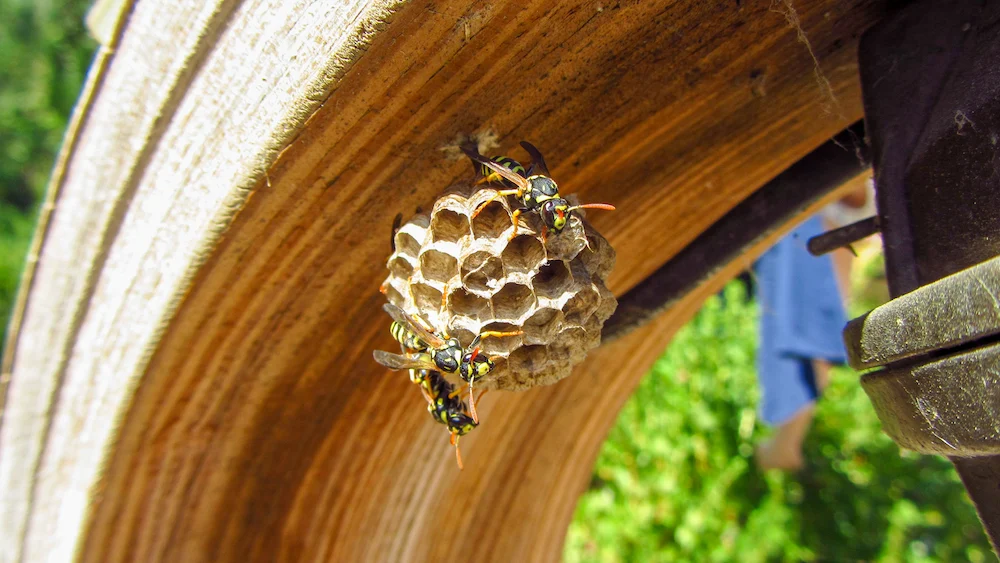
The Busy Pests: ants, bees, mice, rats, roaches, spiders, wasps, yellow jackets
We aren’t the only ones who enjoy spring cleaning! Pests are also busy tending to their homes. Some start over by making a new home (wasps, spiders, etc.), while others expand and clean their existing home (rodents, honeybees, etc.). The need for a safe shelter also leads certain pests (roaches, termites, etc.) to houses and buildings, which is terrible news for us.
This determination to make a great habitat stems from the basic need to feel safe while they carry out these other springtime duties. Pests won’t reproduce or store food in a place that feels like it’s constantly threatened by their predators. No matter how they go about it, pests need to make sure they have a great home before summer hits.
Ruin Structures
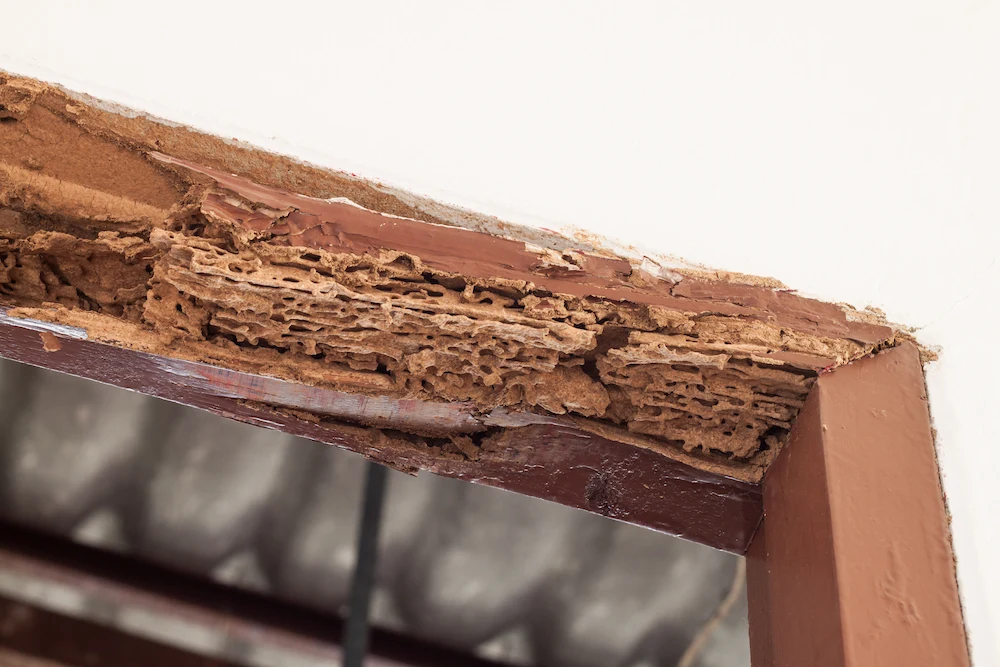
The Busy Pests: carpenter ants, carpenter bees, termites
The pests that celebrate spring by ruining houses and buildings are not any pests you want near your home. All three that we listed above are wood-boring pests, which means they gnaw deep cavities into wood that act as their nests. Carpenter ants and termites are eusocial insects, so they expand these tunnels as their colonies grow.
When they have a safe shelter, these pests can continue their activities in the winter. They just reproduce and create at a much slower pace until spring arrives. Swarmers (winged reproductives) take flight to find a new nest location in spring. The warmth gives insects energy, and the moisture from rain softens the wood to make it easier for them to chew.
Drink Our Blood
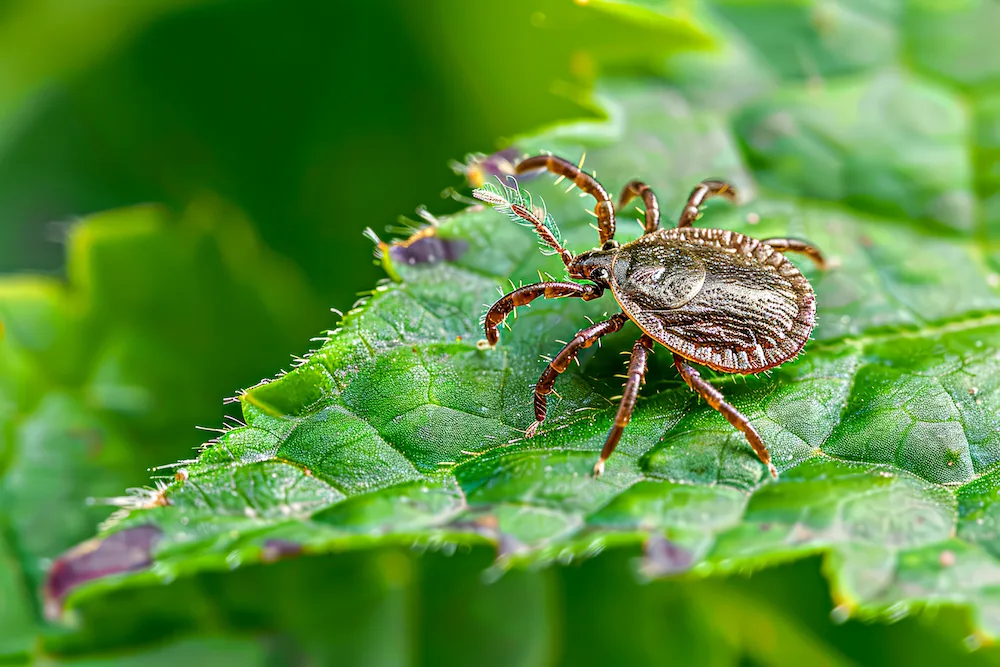
The Busy Pests: fleas, mosquitoes, ticks
This one sounds too dark to be on this list, but it is (unfortunately) a springtime activity of certain pests. Humans and animals both spend more time outside in spring, which makes us vulnerable to bloodthirsty pests. Between the warm temperatures and the increase in mammals outdoors, bloodsucking pests have a buffet ahead of them.
Bloodsucking pests won’t leave an area that has reliable food. If you or your pet spend a lot of time in a specific area, these pests notice and will set up shop in the same space. Ticks can’t fly or jump, so they have to wait for a mammal to get close enough for the pest to crawl on board. They travel (or “quest”) to thick brush or tall grass to wait for an unsuspecting host.
Spring Cleaning = Pest Preventing
The good news about pest prevention is that it goes hand-in-hand with spring cleaning. Nothing can replace professional pest control (more on this next), but there are basic tasks everyone can do to lower the risk of pest infestations. Remember: a tidy home is often a pest-free home!
Our recommended pest prevention tactics (that double as spring cleaning tasks!) are:
- Eliminate Excess Water — Stagnant water is appealing to many pests, like mosquitoes and roaches. Empty out items that collect water and make sure your yard drains properly (after rain, sprinklers, etc.). Also, ensure the gutters and downspout aren’t clogged.
- Clean the Floors — The random dirt, hair, and dust that collect on indoor floors are great food sources for dust mites and carpet beetles. Clean the floors regularly using your preferred method (vacuum, mop, broom, etc.) to remove these food sources.
- Seal Entry Points — Pests are so small that they slip through the cracks — literally. Check the house’s exterior often for new gaps and holes, especially during the rainy season. Seal small gaps with waterproof caulk, and fill larger holes with steel wool before lining with caulk.
- Protect Your Food — When pests have a reliable food source, they’ll never leave. Store all open food items in airtight containers with good lids, especially if they’ll sit in the pantry. The impacted food items include flour, sugars, grains, nuts, cereals, and dried fruit.
- Tend to the Yard — Similar to inside the house, a well-kept yard is less likely to be overrun by pests. During the warm months, do yard work on a regular basis. The most relevant ones for pest prevention are mowing the lawn, weeding, and trimming bushes and tree branches.
- Wipe Up Spills — Pests are opportunists, so they take advantage of any food sources they find. Crumbs and food/drink spills are easily accessible, so make sure to wipe them up as they happen. Use an antibacterial wipe or spray to fully sanitize the area.
- Check Window/Door Screens — The fresh spring air is great for our homes, but you want to make sure your window and sliding door screens are in tact before you open up the house. Check the screens for rips and major holes, and replace mesh that’s worse for wear.
- Maintain the Trash — Trash is gross to us, but it’s a buffet of food to all kinds of pests! Use strong trash bags and take out the garbage before it overflows. For the outdoor trash cans, keep the lids closed and don’t keep the cans right next to the house.
Celebrate Your Spring With Pointe!
In our humble opinion, one of the best ways for people to celebrate spring is with effective pest control services. The highly-trained technicians of Pointe Pest Control are dedicated to protecting local homes and businesses from invasive pests.
Pests will only become more active as the months go on and the temperature rises, so it’s best to use preventative treatments to stay ahead of the busy season. We provide long-term solutions for common pest issues, including ants, spiders, wasps, rodents, and termites. Take back your spring and contact us for a free quote on our reliable services!
Citations
Askham, B. & Hendry, L. (n.d.). Seven insect heroes of pollination. Natural History Museum. Available at https://www.nhm.ac.uk/discover/insect-pollination.html (Accessed on March 12, 2025).
Ward off spring bugs: Tips for getting your home ready for warmer temps. (2020, April 4). Green Pest Services. Retrieved March 12, 2025, from https://greenpestservices.net/ward-off-spring-bugs-tips-for-getting-your-home-ready-for-warmer-temps/
What types of pests come out in spring?. (2022, February 28). Proactive Pest Control. Retrieved March 12, 2025, from https://proactivepestga.com/pest-control-blog/what-types-of-pests-come-out-in-spring/


